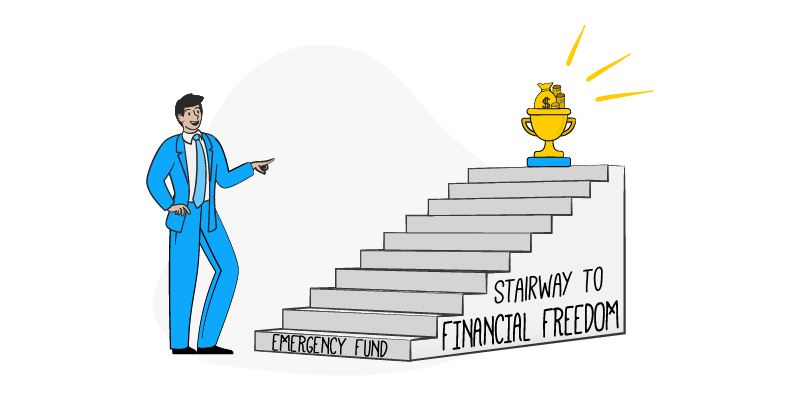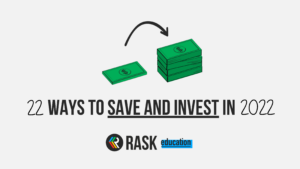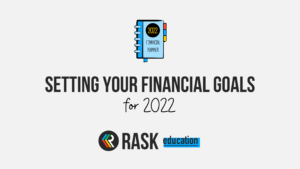This guide explains the importance of having an emergency fund, how much you need to save, and how to get one set up.
Why is it so flippin important to build an emergency fund?
The Stoic’s say negative visualisation is a helpful technique in preparing yourself for challenges you might face in your future, so let’s try and apply this to your finances.
Imagine things have well and truly gone off the rails in your life. You’ve just lost your job, your car has broken down, your pet needs urgent medical care and you need to fly interstate for a family funeral.
How are you going to pay for all these unexpected and time-sensitive expenses?
The way that you prepare and pay for an emergency may well change the direction of your financial future for years to come.
Building an emergency fund gives you the freedom and choice to say no to bad situations, help family in an emergency and deal with the shock of job loss.
Community Case Study (Emma): I was very grateful for my emergency fund when I was out of work for 10 months. I lived in the UK at the time and my mum had died about 9 months earlier and I struggled everyday going to a job I hated during that time and in the end decided to quit without having a new job lined up as I wanted to go home for a couple of months and spend some time with my family. I didn’t think I would be out of work for so long but it was 2010 and London was still struggling with the fallout of the GFC so it took a long time for me to find my next job. Luckily I didn’t need to move back to Australia as I wasn’t quite ready to leave the UK yet and my emergency fund kept me going during that period.
What does an emergency fund do and how much do I need?
Otherwise known as an f-off fund, your emergency fund is your financial runway for whenever you run into unexpected trouble and need to quickly cover some financial costs. It also gives you breathing space between your bills, so you’re not living paycheck to paycheck.
Typically, experts suggest putting away 3–6 months of living expenses to alleviate financial stress and give you a buffer in case of unexpected illness or job loss.
Take note: 3-6 months of basic living expenses can stop you going into debt when stuff hits the fan, and is your first step on the ladder to financial freedom.

However, if you have competing priorities or are currently paying off debt, it may be better to start with putting aside one month of living expenses and committing to building up your emergency fund over time.
The amount that you put aside is completely up to you. However, reasons that might lead you to needing a larger security net include having dependents, contract/casual work or a close relative living interstate or overseas. It’s going to take time and that’s completely okay, you just need to take action and get started!
Community Case Study (Andrea): I had to return to the UK suddenly for about 3 months and was unable to work. I was so glad I had my emergency fund to pay for the flights and pay my home loan and bills until I returned.
Steps to start building your emergency fund
Where should you keep your emergency fund?
First things first, open a completely separate bank account that isn’t linked directly to a spending account. Make sure the account isn’t charging you any fees and preferably it is paying interest (compare savings accounts here).
This account will be used solely for your emergency fund so you have to practise self restraint to avoid accessing it for non emergency situations.
Action Tip: Open a high-interest savings account (that’s not linked to your transaction account) and label it as your dedicated emergency fund.
Set a goal and budget for it
Your next step is to work out how much you will need in your emergency fund. Whether $500 or three months of living expenses, you need to work out the appropriate number for you. Once you’ve got a number you’ll need to make room in your monthly budget for it.
If your goal is $1200, then you might decide to put $100 aside in your budget each month for this for the next year. If you’ll need $6000, then maybe putting $250 a month for two years aside might be a helpful solution for you.
Example: I’ve determined that I need around $3k in my emergency fund, so I worked out a plan to transfer $250 into my savings account each month for the next 12-months. If I can also take on some extra work during the holidays to speed this up, that would be awesome!
Set up automatic payments
Once you’ve worked out how much you want to move into your emergency fund each month, set up an automatic payment depositing funds into your emergency fund from the account you receive your paycheck into on a monthly basis.
If that’s not an option, put a recurring calendar event in your diary that reminds you to move money across to your emergency fund.
By setting up a bulletproof personal finance system, you can start to dominate your finances by having your system passively do the right thing for you, leaving you to focus on the things that really matter.
Ramit Sethi
Be consistent
The key thing to keep in mind is that you need to be consistent with building your emergency fund. It may take a few years to set it up, and you may need to use it along the way, but getting started is the most important part.
If you have any unexpected windfalls such as a tax refund, bonus or you are able to make some extra cash on the side, it might be a good opportunity to boost your emergency fund.
Kate’s tip: The most important part is not being afraid to use the funds that you’ve put aside if something unexpected does happen. Just think of it as your personal parachute that you can open in case of emergency (and if you do, start repairing it straight away)!



